In the first years of the 20th century, the US military was looking for a new standard sidearm in a .45-caliber cartridge, and set up a series of trials to choose one. The entrants to the 1907 pistol trials included many of the prominent semiauto pistols of the day, like the Parabellum (aka Luger), John Browning’s design that would become the Model 1911, the Bergmann-Bayard, and the Webley-Fosbery. Among these submissions was a design form the Savage Arms Company; basically a version of their .32ACP model 1907 pistol scaled up to .45ACP.
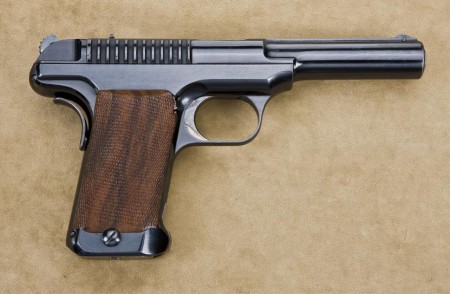
In the initial testing, the Savage did fairly well, although it did suffer a few dozen various malfunctions over the course of 913 rounds. It was recommended for further field trials by the testing board, along with the Colt/Browning pistol. The result of these extended trials was the selection of the Colt/Browning, as it proved a more durable and reliable design than the Savage.
Having now had the opportunity to fire the Savage, I could concur with the Army decision to choose the Colt over the Savage. The Savage is a decent pistol, but inferior to the Colt 1911 in a number of ways. It has more felt recoil, it is physically larger and bulkier,and its controls are more difficult to operate. Granted, many of these things could be fixed with further refinement (as has been done with the 1911 in 106 years since the trials). As it stood in 1907, the Savage had a surprisingly stiff trigger and tiny sights, which made it difficult to shoot accurately. The magazine release was a bit awkward to use, and the slide lock was both very small and not conveniently positioned. The grip was generally good, although designed at too close to a right angle to the bore (a bit like holding a TT33 Tokarev).
Mechanics
Mechanically, the Savage is a locked action using a rotating barrel and recoil operation. However, the dwell time during which the action remains locked is very brief. As soon as the slide begins to move rearward, the barrel rotates and opens – in most other rotating barrel designs there is a bit of rearward locked travel allowed, so that pressure can drop before the breech opens. The Savage does not incorporate this. Instead, the barrel turns counter-clockwise to unlock, and the rifling spins the bullet in a clockwise direction. This causes the bullet to exert a force on the barrel clockwise, presumably preventing it from rotating until the bullet has left the muzzle. This does seem to work in practice, as still frames from the video show muzzle flash (indicating the bullet has left) while the cocking piece remains forward:
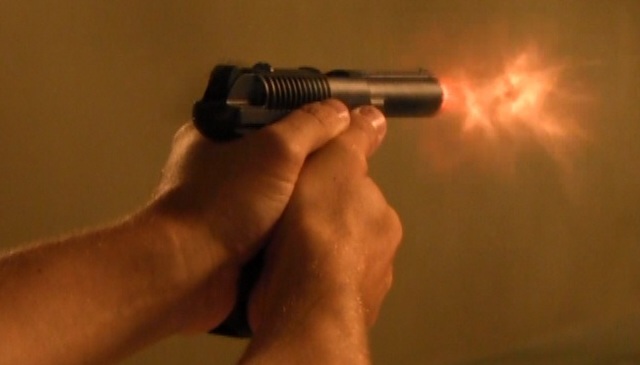
However, the unlocking does occur faster than in other locked-breech handguns. When looking at the frame-by-frame shooting footage, I was treated to this impressive display of flash emanating from every opening of the gun as it cycled. If the action stayed closed a bit longer, this unburned powder would presumably have blown out the muzzle instead of the breech…
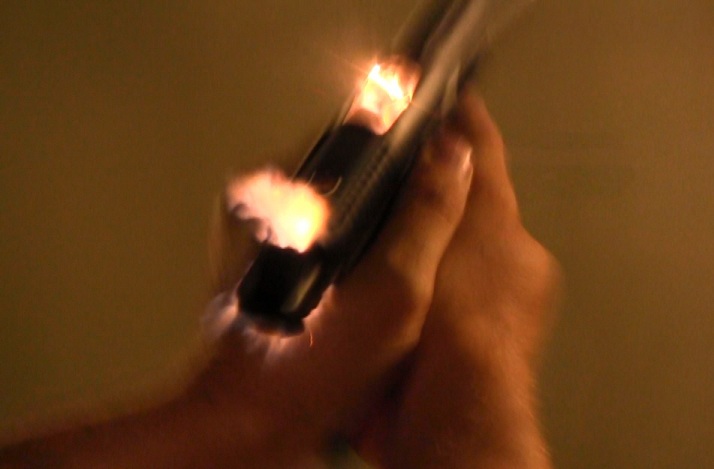
After the Trials
Over the course of the field trial, many of the Savage pistols were returned to the company for repair, and at the end of the period they were all factory refurbished. The guns were later sold back to Savage as surplus (for $6 each, compared to the original price of $65), since the design had not been adopted. Happily, this allowed them into the civilian market – which is why they can still be found today.
Videos
Photos







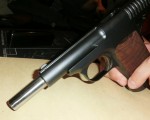
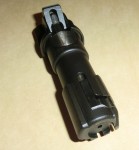



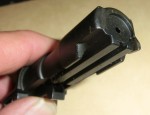
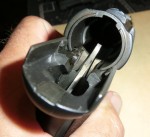
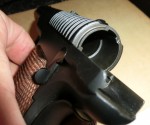

Looking for a breakdown diagram for the Savage 1907 Pistol Automatic.
Thanks so much for putting out this video. I had always been under the (obviously false) impression that there were only a handful of these pistols still in existence and that the price of one, if it could be found would be astronomical. I have never seen one for sale anywhere, I the one on the NRA museum website is beautiful in my opinion. I would love to own one, but could probably not afford the asking price if one were available. I found your video to be very informative and interesting to watch. It is a shame though that close up detail shots of the pistol are not very clear. Still, I think you are doing a very valuable service for those of us who love to see these old guns. Thanks so much!
I have one available that is in amazing condition and the savage arms and patent year and caliber remain on the top rib of firearm.
Any chance that Timothy or anyone can send some pictures of the Savage 1907 45 acp mag with measurements. I own #43 w/o a mag and have been in search of a mag. This is my quest even if I have to have one fabricated.
Thanks,
Ted tedmdds@nc.rr.com
I’ve just seen 2 for sale. About 20k each.
I just wanted to add that in my previous comment I meant to say that the close-up detail shots in the video itself did not show up clearly at times.
Actually, as I understand fizzix, the way you describe the action would cause it to unlock *faster*; if you go back and review the video, you’ll see the barrel rotating clockwise as the slide opens [as viewed from behind] which if combined with clockwise rifling [always described from the bullet’s POV], means that the bullet’s mass resists the additional clockwise acceleration of the barrel as the pressure forces it straight down the barrel [which is why the Brits always used left-hand rifling for pistols, as the recoil forces it *into* the hand of a (presumed) right-handed shooter, while rt-hand rifling for long arms meant the rifle was forced into a better cheek-weld for a (again, presumed right-handed) shooter…]
BTW, since the 1905 .45cal version predates production of the 1907 .32acp model, wouldn’t it be more correct to say the 1907 was a scaled-down version of the .45, rather than the other way round (as you do in the vid?} ;-D
“SAVAGE AUTOMATIC PISTOLS” by James R. Carr, pub 1969 states: “During the developement of the .45 caliber pistol for military use Savage came up with the idea of bringing out a pocket model. This was the era of the pocket pistol for home and self protection. The .32 ACP had already proved itself as a popular cartridge thus the first Savage pocket automatic was developed in this cartridge.”
Just for clarification.
THANK YOU!
I was the weirdo kid who obsessively read ALL the tech stuff (and old Interarms advertisements) in dad’s 1960-1970s era “American Rifleman”, back before Harlan Carter remade the NRA in his own image.
With all due respect!
You’re a bigger gun nerd than I am. And now, with WAY more resources! Keep ’em coming. And PLEASE. don’t feel any pressure to “put out something, ANYTHING” just because it’s been X days since the last video. Quality is so rare… I will happily wait for the next (high quality) fix. Crap YouTube videos, they’re already available everywhere. Surprise me and evade Sturgeon’s Law, please do consistently be among the 10%.